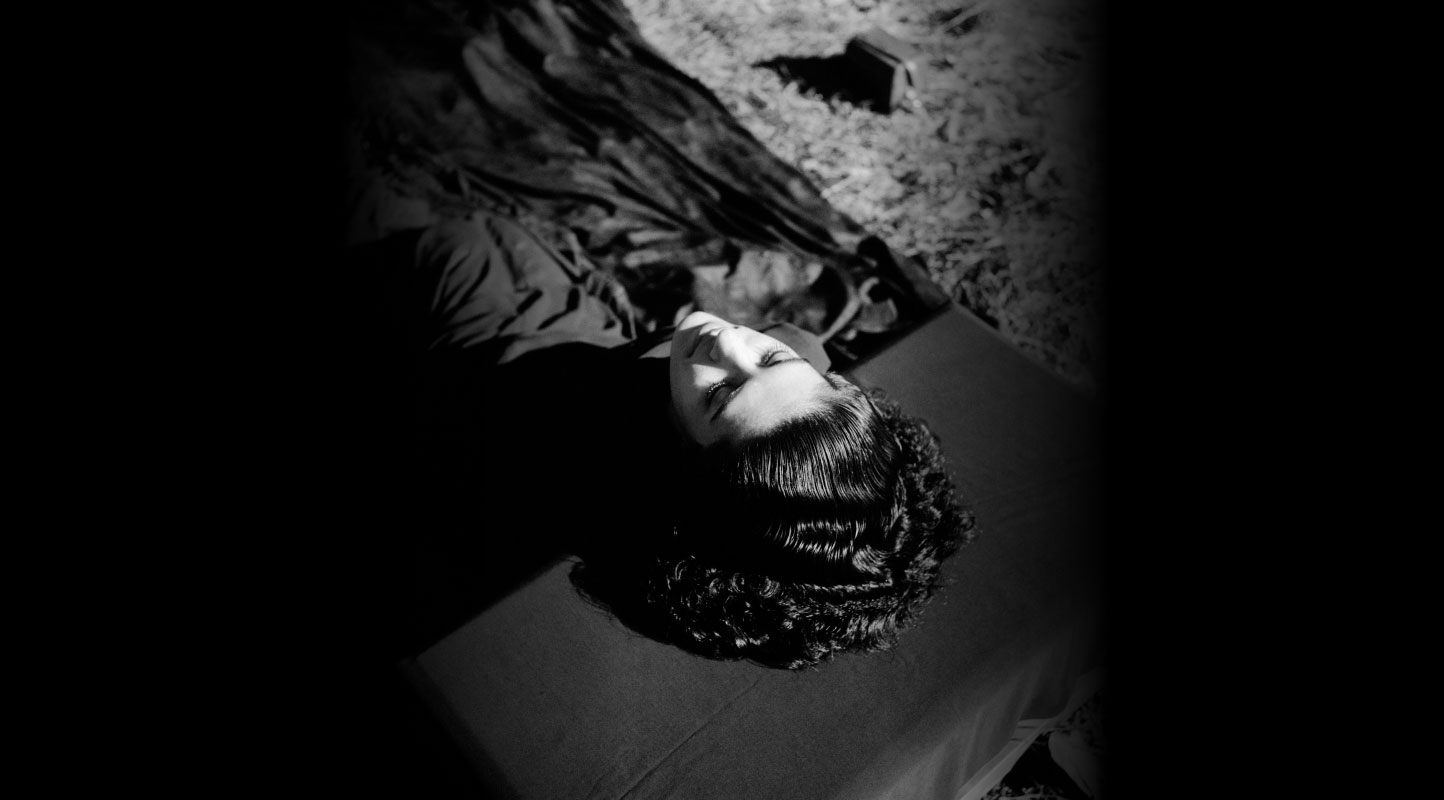Of Breath and Death: Vigil by Pallavi Paul
Pallavi Paul’s ongoing multidisciplinary series of artworks titled The Wind in Your Body Is Just Visiting, the Breath Will Soon Be Thunder (2023) reflects on the power of the unseen—a recurring motif in her decade-long practice. The series of filmic manoeuvres thus far comprises subtle, soothing and brooding pieces of film, drawing, sculpture and installations that encourage audiences to think about the complex systemics in and around breath.

A woman in a turquoise headscarf prays near a grave at the cemetery.
Starting the series is Vigil (2023), a film with a runtime of nine minutes and twenty-two seconds, in which a graveyard keeper at a private cemetery near the Maulana Azad Hospital in Delhi reminisces about his work and livelihood during the Covid-19 pandemic. We see a woman in a turquoise headscarf praying near a grave, possibly thinking about “those who are with us and those who are absent,” surrounded by sounds of birds and urbanity on a seemingly calm Delhi morning. The graveyard keeper says that the average number of bodies he deals with in a month is eight to ten. However, he continues to talk about the months of April and May 2021—the Delta wave of the pandemic—which completely changed the atmosphere of the graveyard, as they had to prepare graves at a scale they had never encountered before.

White shrouds are washed and hung to dry at the cemetery, awaiting the next funeral.
As the graveyard keeper’s monologue becomes the voiceover which tells us his story, Paul’s visual language keeps us occupied with signifiers of breath––unseen. Air in Delhi became particularly contentious during the pandemic as not only did it have its usual taint because of pollution but also an inconspicuous virus that could spread without citizens’ knowledge. The graveyard keeper speaks about how contamination and mystery made Covid-19 almost like a death sentence that kept them away from their loved ones. Discrimination against the Muslim community increased in India due to their choice of burials, which were presumed to add to the spread of Covid-19. Breathless bodies and graves were treated as harmful for the existence of certain other communities who choose different ways of respecting their dead. Scientific studies could not keep up with interventions of the socio-political in terms of religion, ethnicity, caste and class.

The graveyard keeper speaks of a Waqf board-operated cemetery near an Income Tax Office (ITO) in Delhi.
In spite of all this debate and controversy, the graveyard keeper says that he could not leave “the departed unburied.” These words are perhaps strongest in capturing Paul’s inspiration of thinking with, through and about breath. Without breath, the graveyard keeper’s voice could not have been produced; Covid-19 would not have escalated into a global pandemic; and Paul’s ally and disobedient friend, the camera, could not have been manipulated into capturing the story of Vigil.

The daily life of the graveyard keeper; he removes his own clothes from the line directly next to the white shrouds meant for the dead.
We wonder if Paul’s approach to film is an obsession with archiving feeling and emotion—almost a bottling and release of them into the ocean, much like how humanity is absorbed by the earth upon death. The impossibility of representing trauma and emotion—which Paul plays with in Vigil—is prevalent in aesthetic and literary discourses: Cathy Caruth highlights how trauma is like a “...moving and sorrowful voice that cries out, a voice that is paradoxically released through the wound.” It is also possible to look at trauma as a narrative, one which “...does not simply represent the violence of a collision but also conveys the impact of its very incomprehensibility.” The trauma narrative therefore combines the incomprehensibility of emotions along with an attempt to represent through creative mediums. The trauma narrative—as Caruth describes it—allows Paul to tell and retell the story of the breath, slowly rendering knowledge and developing a consistent practice examining the impact of the unseen phenomenon through multiple recent multidisciplinary works like Twilight’s Envelope (2024), How Love Moves (2023), Salt Moon (2023) and Slumber (2023).

One Moinuddin from Old Delhi and another from Seelampur die from Covid-19 at the same time. This is followed by a mix-up of their bodies at the mortuary.
To learn more about Pallavi Paul’s work, revisit Arushi Vats’ essay on Walking as Alibi: The Dreams of Cynthia (2022).
To learn more about representations of life and death during the Covid-19 pandemic, read Santasil Mallik’s essay on Ishan Tankha’s still, life (2022), Annalisa Mansukhani’s reflections on Anita Khemka and Imran Kokiloo’s series Shared Solitude (2022), Najrin Islam’s piece in memoriam for Danish Siddiqui and Veeranganakumari Solanki’s essay on Yasmin Jahan Nupur’s practice.
All images from Vigil (2023) by Pallavi Paul. Images courtesy of the artist.




